Many question marks after the earthquake
Day three after the devastating earthquake in Nepal: The death toll in the country has risen to almost 4,000, and it is continuously increasing. An end of the bad news is not in sight. Still information focusses on the most heavily hit capital Kathmandu and the region around Mount Everest. From the other regions of the country, messages are barely trickling in. German trekkers report that debris flows also occured on the Annapurna Circuit on Saturday. Many trekkers are reportedly waiting on their way around the eight-thousander Manaslu for being evacuated by helicopter. The base camp at the foot of Annapurna was hit by an avalanche on Saturday. “It just about buried us in our tents, we had to use our knives to cut our way out. After that, myself and two sherpas had to do a rescue of a teammate”, Canadian mountaineer Al Hancock said.
Helicopter airlift
At Mount Everest, the rescue of the climbers, who were stranded at Camp 1 above 6,000 meters, is standing just before the end. Only 15 mountaineers are still waiting to be flown to the valley by helicopter. All Monday long, there was an airlift to Camp 1, where initially about 150 climbers had been cut off from descent. Continously the helicopters started and landed. The “Icefall Doctors” have stopped their work on the route through the Khumbu Icefall for fear of aftershocks. Reportedly, three Sherpas died in the ice labyrinth during an aftershock on Sunday. It is still not clear how many climbers were killed in Everest Basecamp by the huge avalanche from Pumori, that was triggered by the earthquake on Saturday. Figures currently vary from 16 to 19. German climber Jost Kobusch survived. The 22-year-old took this video of the avalanche:
Stop on the Tibetan north side of Everest?
The situation on the Tibetan north side of Mount Everest is unclear too. The official news agency Xinhua reports that China has cancelled all expeditions this spring. Xinhua relies on a high-ranking official who said that more aftershocks were expected next month. Today, Chinese officials discussed with the expedition leaders in “Chinese Base Camp”. According to my information, there will be another meeting on Tuesday morning. The German couple Alix von Melle and Luis Stitzinger has abandoned their Everest expedition on the north side on their own accord. “We cannot turn a blind eye to the suffering thas happened (in Nepal)”, Alix and Luis write on their homepage. “Moreover, we do not want to be the reason why Nepalese helpers, cooks and Climbing Sherpas have to stay here and cannot go home to their families to see if everything is alright.”
Video of the avalanche that hit Everest Base Camp
Barely no chance to escape
The quite inconceivable really happened. A huge avalanche from Pumori, triggered by yesterday’s earthquake in Nepal, hit the Base Camp at the foot of Mount Everest at full force. The seven-thousander is located just opposite the highest mountain in the world. But hardly anyone had expected that an avalanche from Pumori would reach the edge of the Khumbu Icefall. “I ran and it just flattened me. I tried to get up and it flattened me again. I couldn’t breathe, I thought I was dead,” said George Foulsham, a mountaineer who lives in Singapore. The 38-year-old marine biologist was lucky and survived. It is not yet totally clear how many climbers lost their lives in Base Camp.
![]() read more
read more
Rescue runs on Mount Everest
My heart is heavy. My thoughts are with the people in Nepal – and also with the climbers on Mount Everest. After the devastating earthquake on Saturday, the death toll is rising continuously. Meanwhile, it’s more than 2,000 across the country. And also from the base camp on the Nepalese side of Everest more and more victims are reported. As reported before, yesterday’s earthquake had triggered a huge avalanche from the seven-thousander Pumori vis-a-vis Everest that had hit the Base Camp at 5,300 meters. Today, the area was shaken by strong aftershocks of magnitude 6.7 on the Richter scale.
![]() read more
read more
Nepal devastated by earthquake, avalanche on Everest
The number of victims of the devastating earthquake in Nepal is increasing every hour – now over 1100. In the capital Kathmandu, but also in the nearby towns of Patan and Bhaktapur, many houses and buildings collapsed, including centuries-old temples. The tremors reached a magnitude of 7.8 on the Richter scale, the center of the quake was 80 kilometers north-west of Kathmandu. At least ten climbers were killed at the foot of Mount Everest after the quake had triggered a massive avalanche on Pumori. The seven-thousander is located vis-a-vis the highest mountain in the world. The situation is dramatic.
![]() read more
read more
Breaking news: Strong earthquake in Nepal, avalanche hits Everest BC
Terrible news from Nepal: A severe earthquake of magnitude 7.9 has killed several hundred people. At Mount Everest, the shocks triggered a huge avalanche. The snow masses reportedly released from the seven-thousander Pumori and met the Everest Base Camp. According to the Nepalesse government at least eight climbers were killed. The number could rise, said a representative of the Ministry of Tourism. On the Tibetan north side of Everest apparently nothing happened. “The quake was clearly felt in Everest BC, it occurred smaller landslides and debris flows. Nobody was hurt. We are doing well”, wrote German climber Luis Stitzinger.
P.S. Follow my tweets! (right side of the blog)
Lunger and Moro: Goodbye Manaslu!
South Tyrolean climber Tamara Lunger and her Italian team partner Simone Moro have finished their expedition to the eight highest mountain on earth. They had planned to climb not only the 8167-meter high main summit of Manaslu but also in one push the 7992-meter-high Pinnacle East. “It started off as a winter expedition and is ending as a spring one only by the calendar and not because of the weather conditions. I wrote ‘ending’ because this is the final decision taken by Tamara and myself over the past few hours”, Simone wrote from base camp at 4800 meters. “We have used up all our patience, optimism, experience and shrewdness, but for this year Manaslu remains for both of us a dream we have decided to postpone.”
![]() read more
read more
Two fatalities on Annapurna
 The joy at the first summit successes of the spring season on one of the eight-thousanders in Nepal was overshadowed quickly. The news that 13 members of an expedition organized by the Nepalese operator Dreamers Destination had reached the summit of 8091-meter-high Annapurna on Tuedasy had just faded away when it was followed by bad news: The 36-year-old Finn Samuli Mansikka and the 35-year-old Pemba Sherpa fell to death during the descent. On Mansikka’s website his death was confirmed.
The joy at the first summit successes of the spring season on one of the eight-thousanders in Nepal was overshadowed quickly. The news that 13 members of an expedition organized by the Nepalese operator Dreamers Destination had reached the summit of 8091-meter-high Annapurna on Tuedasy had just faded away when it was followed by bad news: The 36-year-old Finn Samuli Mansikka and the 35-year-old Pemba Sherpa fell to death during the descent. On Mansikka’s website his death was confirmed.
![]() read more
read more
When the glacier melts
Nepal has a problem with its glaciers. Over the past three decades, the 3808 glaciers in the Himalayan country have shrunk by about a quarter. The increased melt created some glacial lakes which scientists call ticking time bombs. One of the biggest of them, Tsho Rolpa, which is located about 100 kilometers northeast of Kathmandu, is estimated to contain between 90 and 100 million cubic meters of water by now. If the natural dam burst, it would have devastating consequences. This week, the Nepalese capital is hosting an international conference, during which more than 200 scientists from around the world exchange their findings about the impact of climate change on the high mountains of Asia – not only on the the Himalayas, but also on Karakoram, Hindu Kush, Tien Shan, Pamir and the Tibetan plateau.
![]() read more
read more
Sought: Himalayan Mountain Hut
As in the Alps, mountaineers in the Himalayas shall soon find shelter in mountain huts. Not in simple wooden or metal sheds. The new huts shall be functional, low maintenance, not too expensive, but, please, also nice and comfortable. The Nepal Mountaineering Association (NMA), in cooperation with the Nepalese development programme Samarth, announced a competition for architects and designers to find “an innovative high altitude accommodation unit which will be the first of its kind ever to be established in Nepal”.
![]() read more
read more
Pathetic? No way!
Nepal needs strong women like Maya Sherpa. “With our women expedition project we want to inspire women doing what we really are capable of even after being married and having children”, the 36-year-old climber writes to me. In July 2014, she scaled the 8611-meter-high K 2 with Dawa Yangzum Sherpa and Pasang Lhamu Sherpa Akita. They were the first female climbers from Nepal on top of the second highest mountain in the world. A week and a half ago, I introduced the trio’s new project in my blog: the planned ascent of Kangchenjunga next spring. I got Maya’s answers to my questions concerning their plans a few days after the article had gone online.
![]() read more
read more
Many question marks before spring season on Everest
The same procedure on Everest as every year? Probably not, but a reliable forecast is difficult. “There seem to be less people on expeditions and also less people trekking in Nepal”, the New Zealander Russell Brice replies to my question which influence the avalanche disaster on Good Friday 2014 and the subsequent end of all great expeditions on Everest south side will have on this year’s spring season on the highest mountain in the world. “It seems that more people want to go to North side, and less people to South side”, says the head of the expedition operator Himalayan Experience. However, Brice withdrew his tendered Everest expedition in Tibet and decided to just operate on the south side this year.
![]() read more
read more
(Mountain) Female power from Nepal
They are a powerful trio on the mountain: On 26 July 2014, Dawa Yangzum Sherpa, Maya Sherpa and Pasang Lhamu Sherpa Akita were the first women from Nepal, who reached the 8611-meter-high summit of K2 in Pakistan. The second highest mountain in the world is also called “Savage Mountain” due to the difficulty of ascent and the high fatality rate. “We were the first Nepalese women on K 2! And it was not easy climbing this moutain. Only real climbers know how and why we climbed K 2”, Dawa Yangzum writes to me. Mountaineers had appreciated their performance in an appropriate way. They did not expect that from the Nepalese government anyway: “Mostly, the government, the ministry and all these people just know Everest and the Seven Summits. If we had climbed the Seven Summits, they would have made us a front page news”, says the 25-year-old. The government is in Dawa Yangzum’s bad books anyway.
![]() read more
read more
Prolonged Everest permits for groups only?
Maybe it will turn out to be not quite as bad as it looked first. A report of the Himalayan Times about the Everest permits has upset many mountaineers worldwide – including myself. The report said that the extension of last spring’s Everest permits by five years would apply strictly to groups not to individual climbers. Means: If even one member of an expedition would scale the mountain, permits of the other group members would be cancelled. After the avalanche accident in the Khumbu Icefall last April that had killed 16 Nepalese climbers and led to the premature end of the spring season, the government had announced that the 318 departed climbers could use their permits even within the next five years.
![]() read more
read more
Instant Everest
A characteristic of our time is that nobody has time – or does not take his time. That affects mountain tourism too. For years, German operators note a decreasing interest in expeditions that take 50 or even 60 days. Simultaneously, more climbers tend to book trips for which they need only 30 leave days. In other words, expeditions to 7000ers are booming, those to 8000ers are ailing. Apparently, the trend “the shorter, the better” also applies to trekking. Experts in Nepal have called to change with the times by offering shorter treks. They said that an increasing number of trekking tourists in Nepal were coming from China and Southeast Asian countries – and those trekkers simply had not time for a three-week trip on the Annapurna circuit or to trek to Everest base camp.
![]() read more
read more



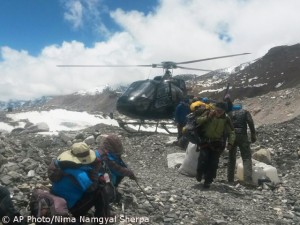
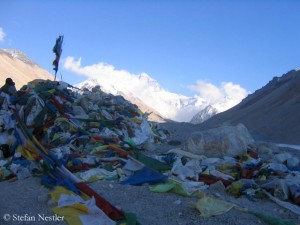

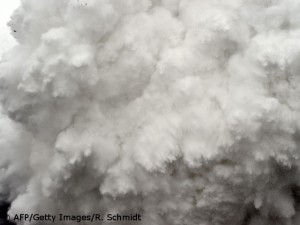
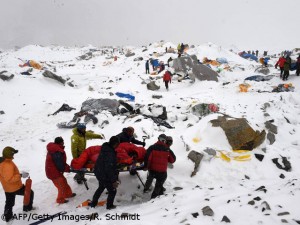
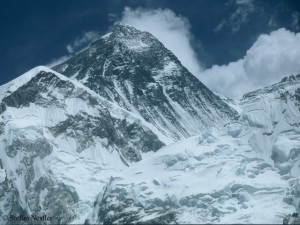
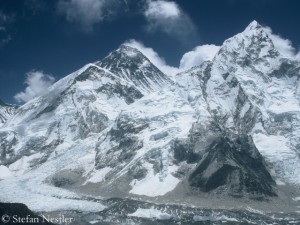
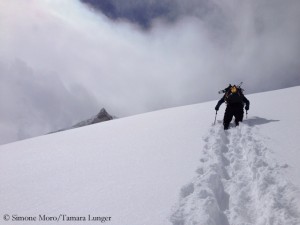
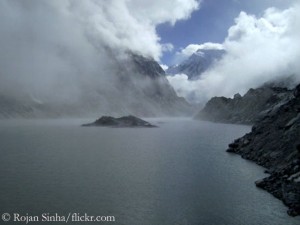
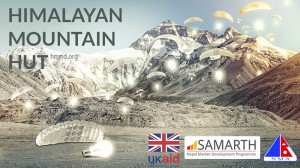
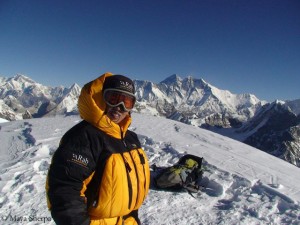
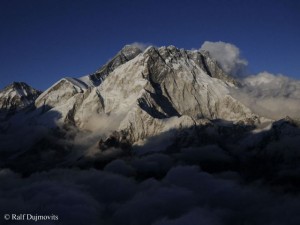
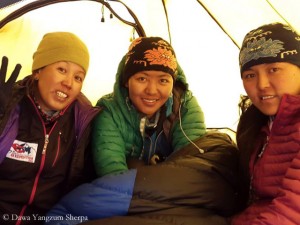
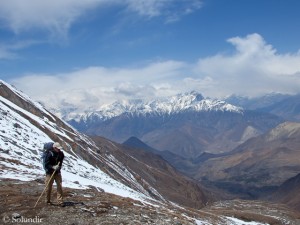





Feedback